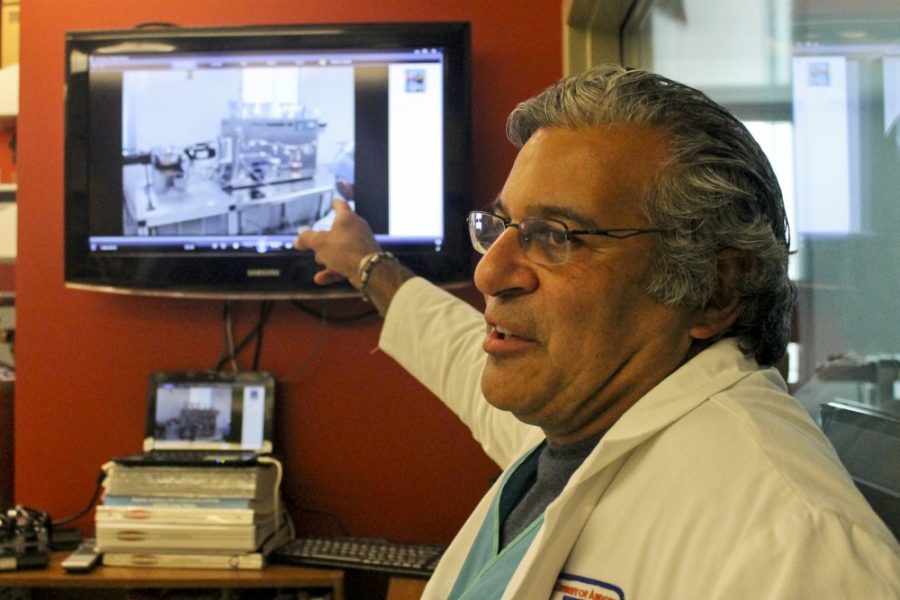In an effort to cure Type 1 diabetes, a UA researcher is using his many areas of expertise to help the body naturally regulate its insulin.
Dr. Horacio Rilo serves as director for the UA’s department of cellular transplantation, a professor of surgery and aerospace and mechanical engineering. Rilo’s work delves into many subsections of science and technology, such as artificial organs, building scaffolds for skin replacements and improving oxygen diffusion methods for stored organs in longer intervals of time.
Rilo’s work on clinical islet allotransplantation for the treatment of Type 1 diabetes and chronic pancreatitis, where specific cells in the pancreas of a donor are transplanted to a recipient’s liver, is unparalleled in the scientific community.
According to Rilo, islet cells account for only 1 percent of the entire pancreas. Islet cells produce insulin for the body, which is located in the pancreas behind the stomach.
Insulin helps the body regulate its metabolism and allows the cells in the body to take up glucose from the blood, lowering sugar levels. It also stops the release of glucagon, which has the opposite effect.
“What we do by giving the islet back is we create a balance; on one side you have insulin and the other you have glucagon,” Rilo said. “So when the insulin brings the glucose down, the glucagon brings it up.”
A successful islet transplantation would allow the patient to regain the ability to naturally produce insulin by removing the islet cells from the pancreas and placing them in the liver.
According to Rilo, separating the islet cells from the pancreas is the tricky part, but utilizing robotics helps with the transition.
“I developed a computer control system with a robot that uses a graphic interface that allows me to control all the variables,” Rilo said. “The computer has control of the temperature, pH flow, and you also have control of the robot.”
Once the pancreas is removed from the patient, it is moved from the operating room to Rilo’s lab. He then digests the pancreas with an enzyme that helps separate the islet cells from the exocrine and places it in a chamber with special marbles, where then the robot takes over and controls the environment in the chamber. It shakes the pancreas and turns the islet cells red for better visibility.
“The technique is very simple, because once you get the cells, you infuse them through a vein and it goes into the liver,” Rilo said. “The liver acts as a surrogate place for the islet cells.”
Rilo shares his lab work with colleagues and a few undergraduate students. Zain Khalpey, an associate professor of surgery, was chosen from Harvard College to work with Rilo on heart and lung ex-vivo perfusion. This would allow them to work on a lung or a heart outside of the body, in a carefully preserved, non-hostile dome, where they would feed oxygen and solution into the organ to maintain viability.
Rilo has performed more than a hundred islet cellular allotransplantations. He travels back and forth from his lab at the Medical Research Building to the operating room at the Univeristy of Arizona Medical Center during surgical operations.
“It is hard to define me,” Rilo said, “Because I do not fit in a box. I don’t like to be in a box. That’s one of the things that attracted me here.”









